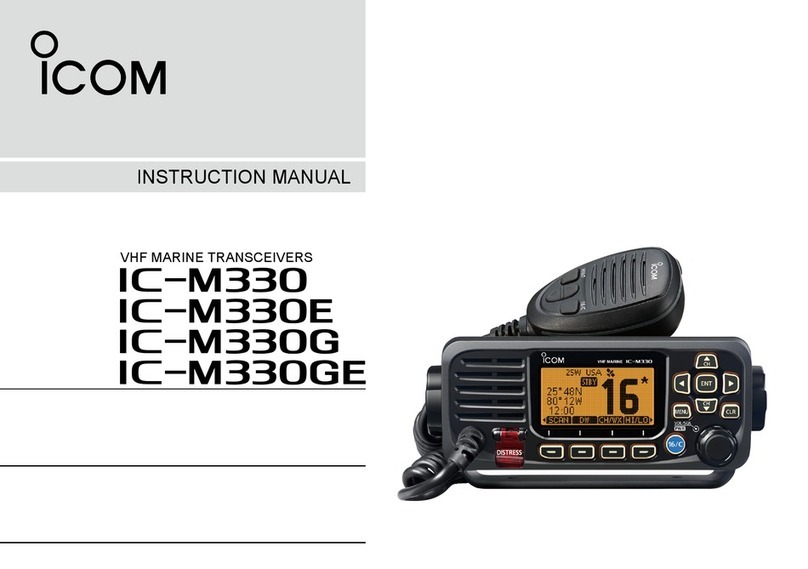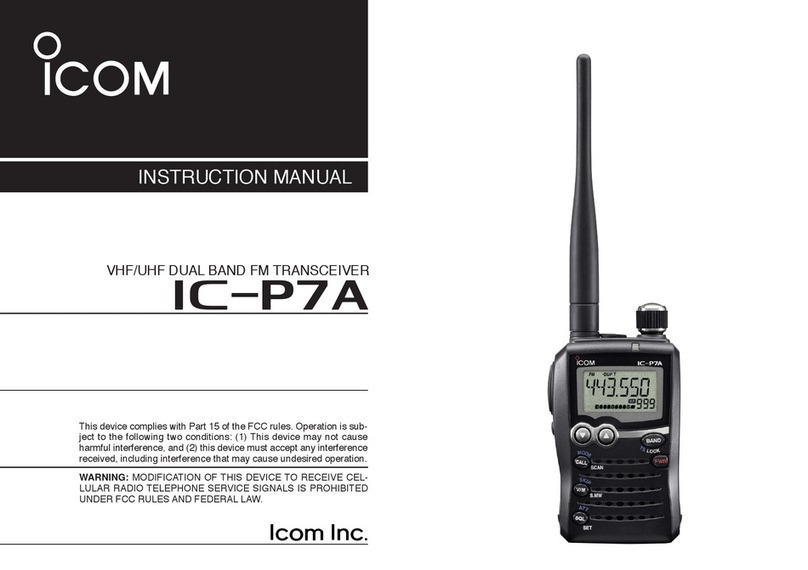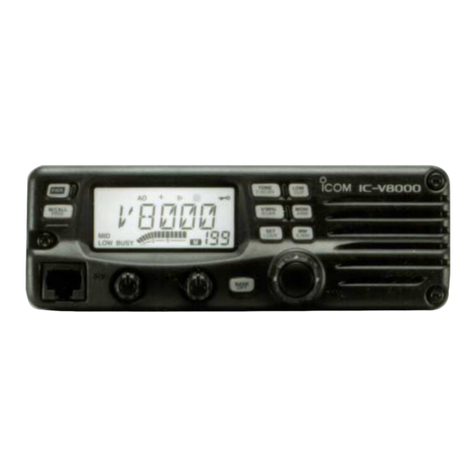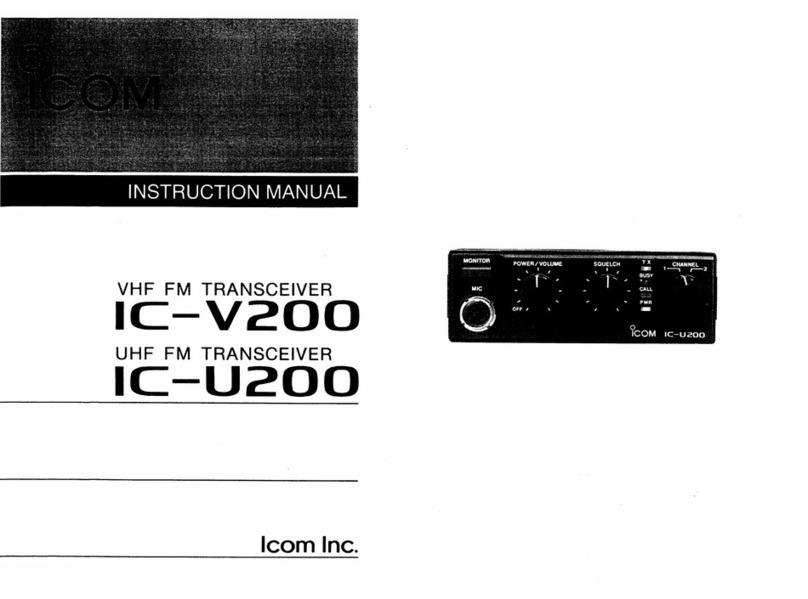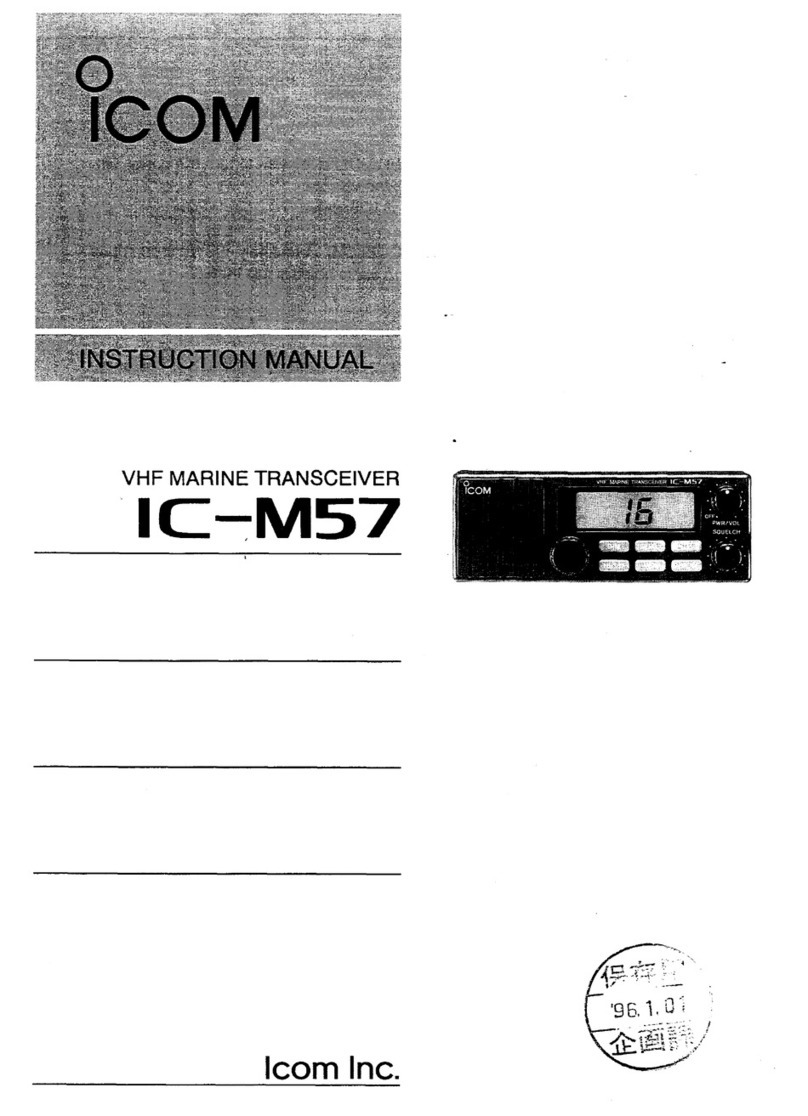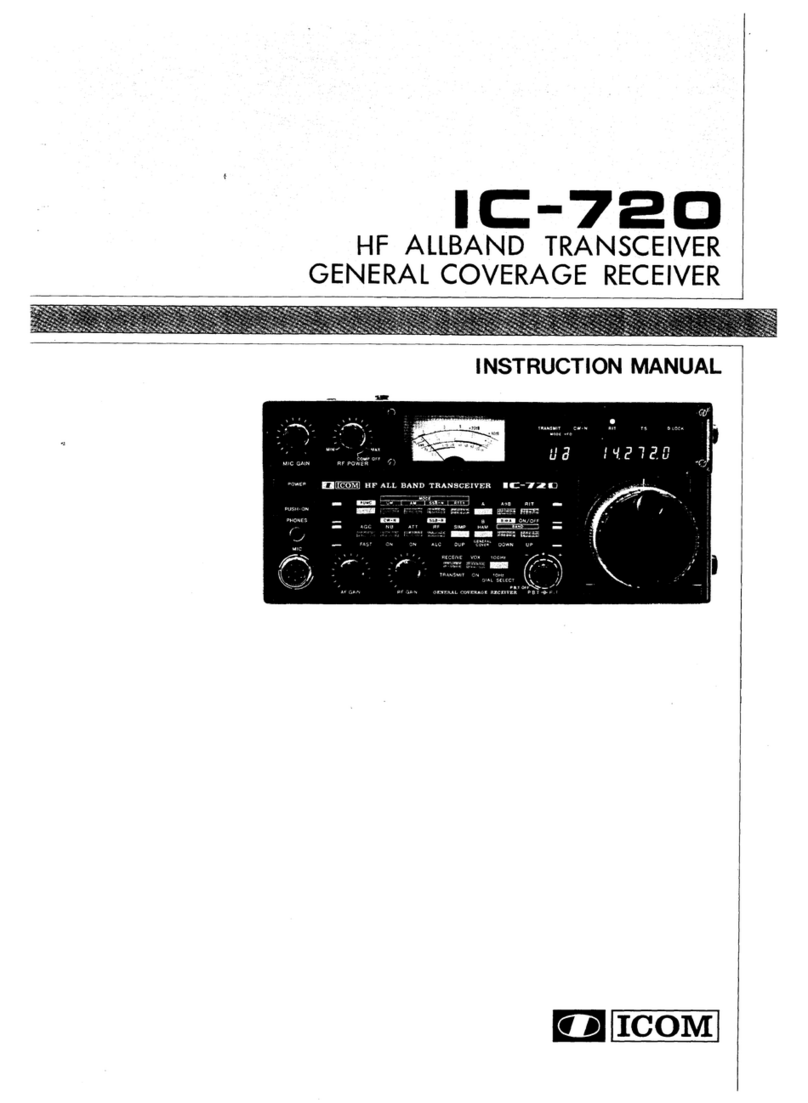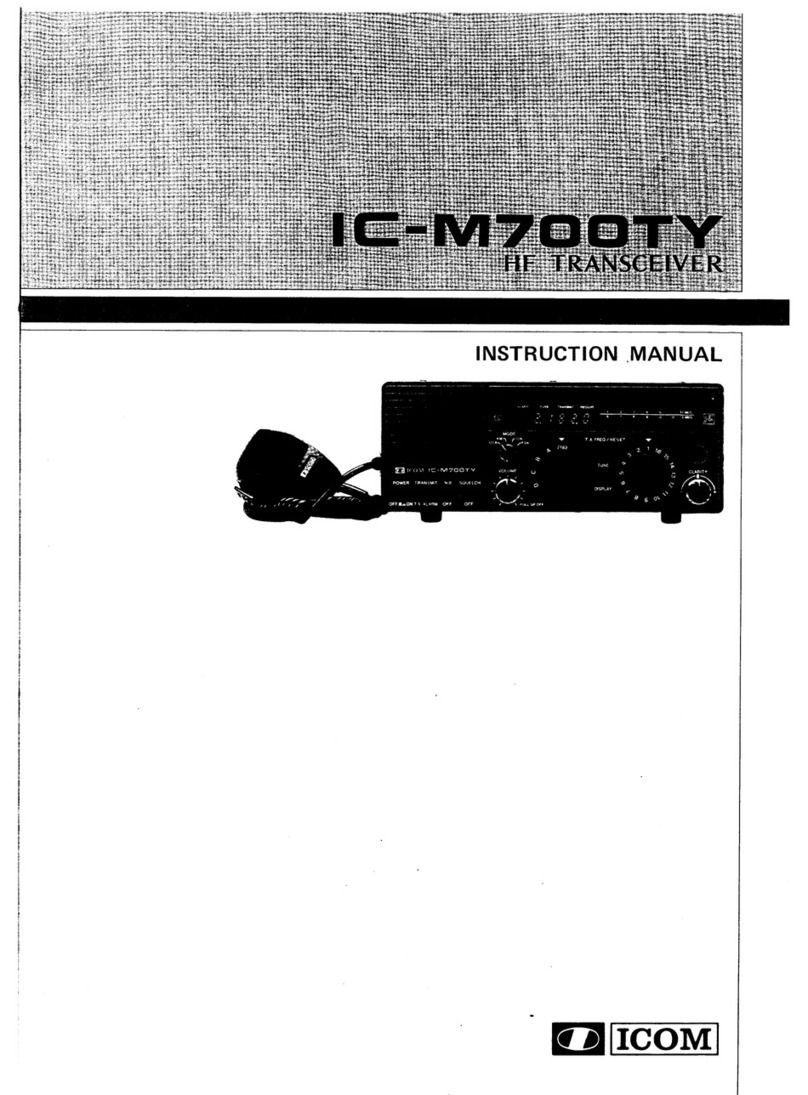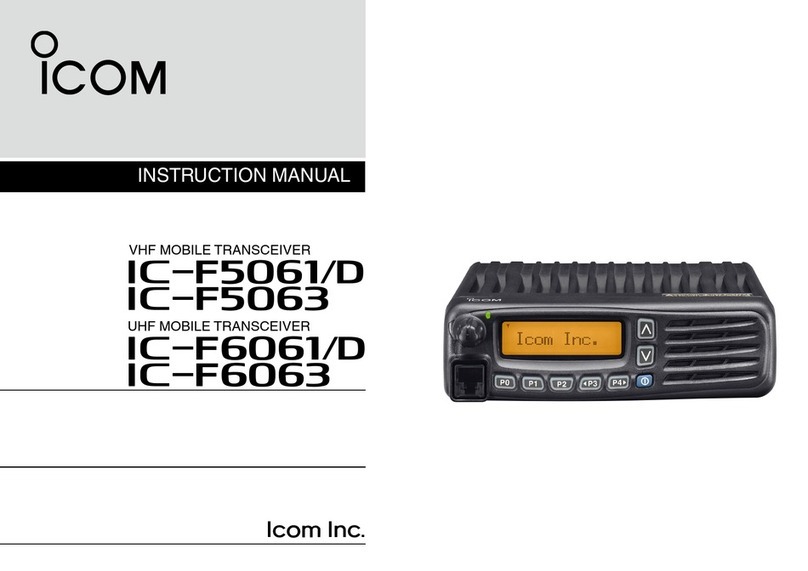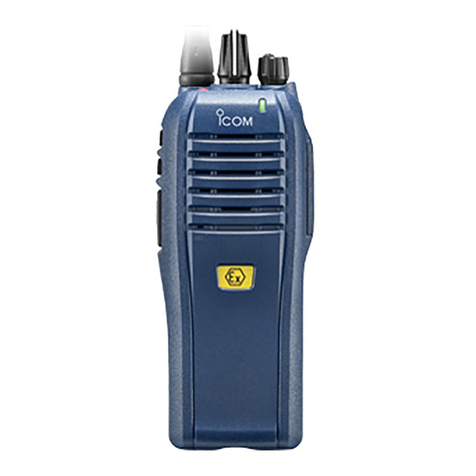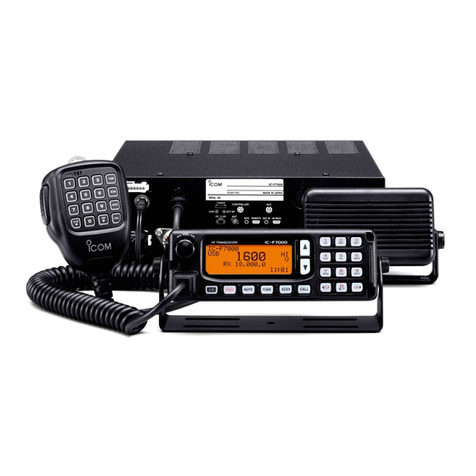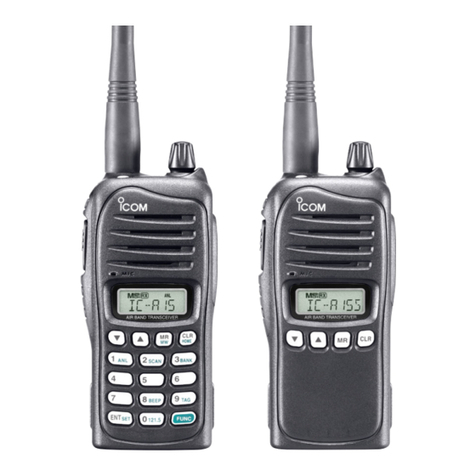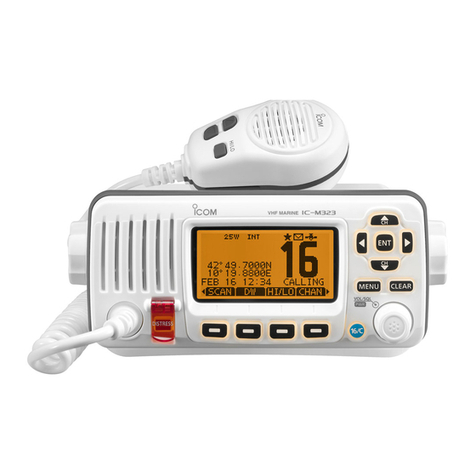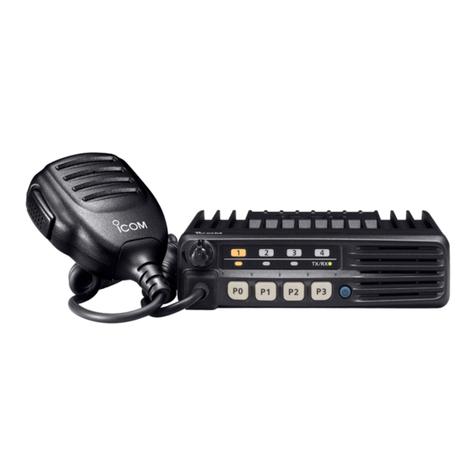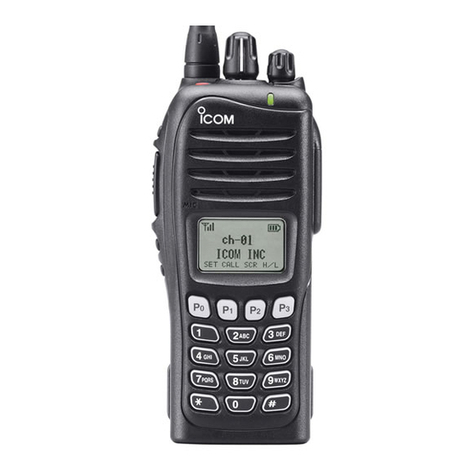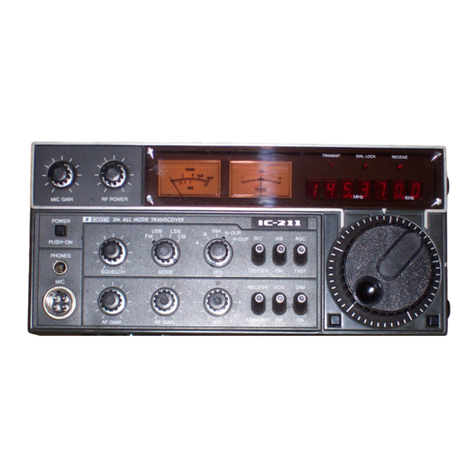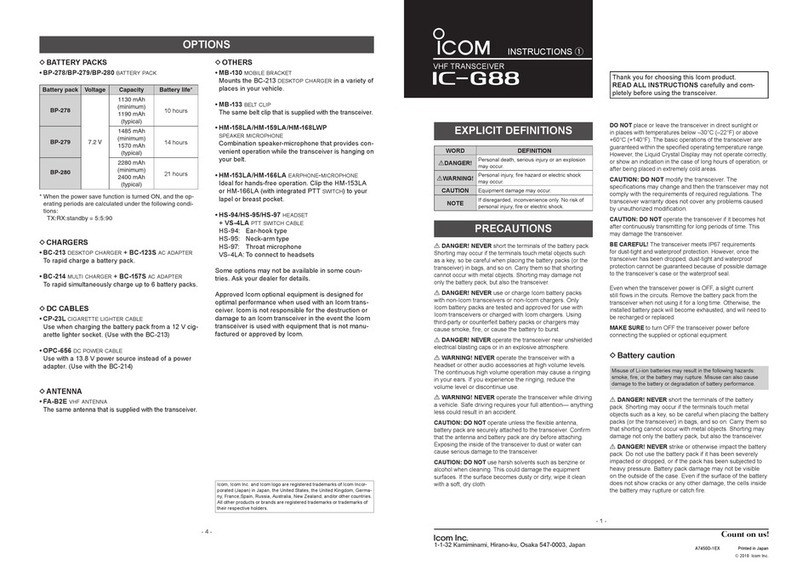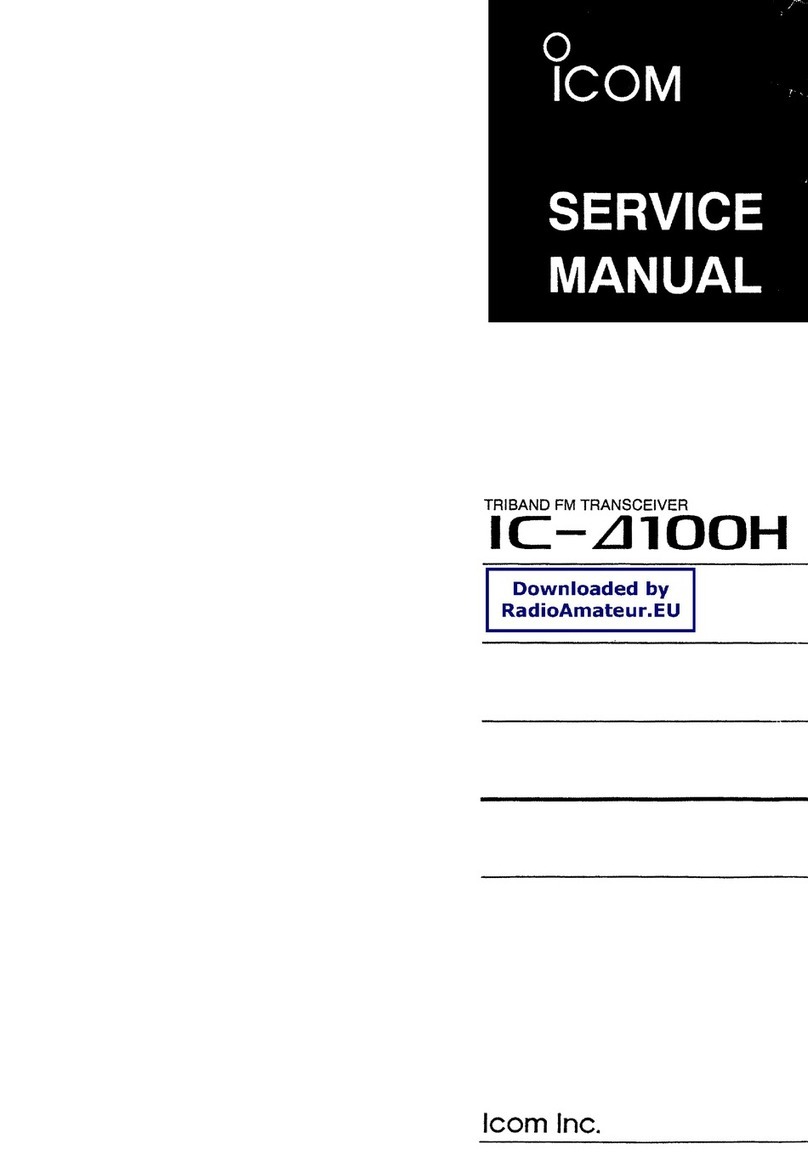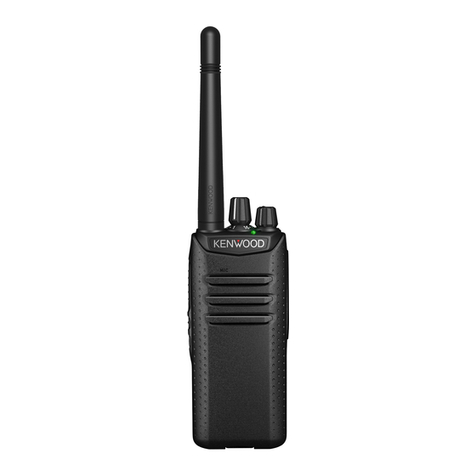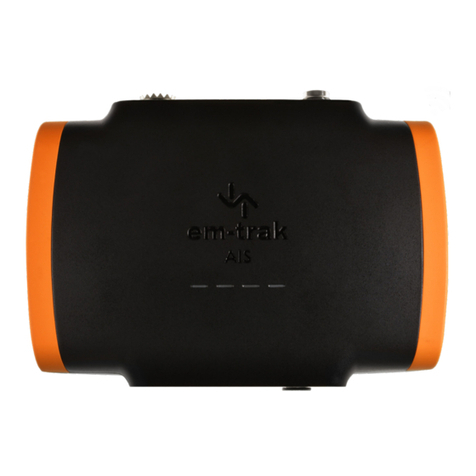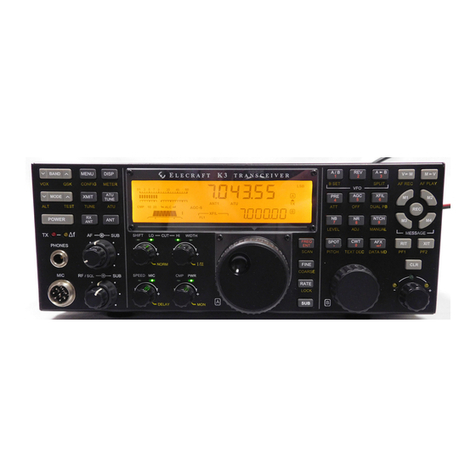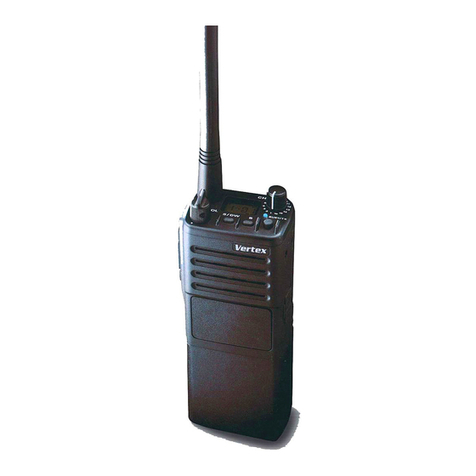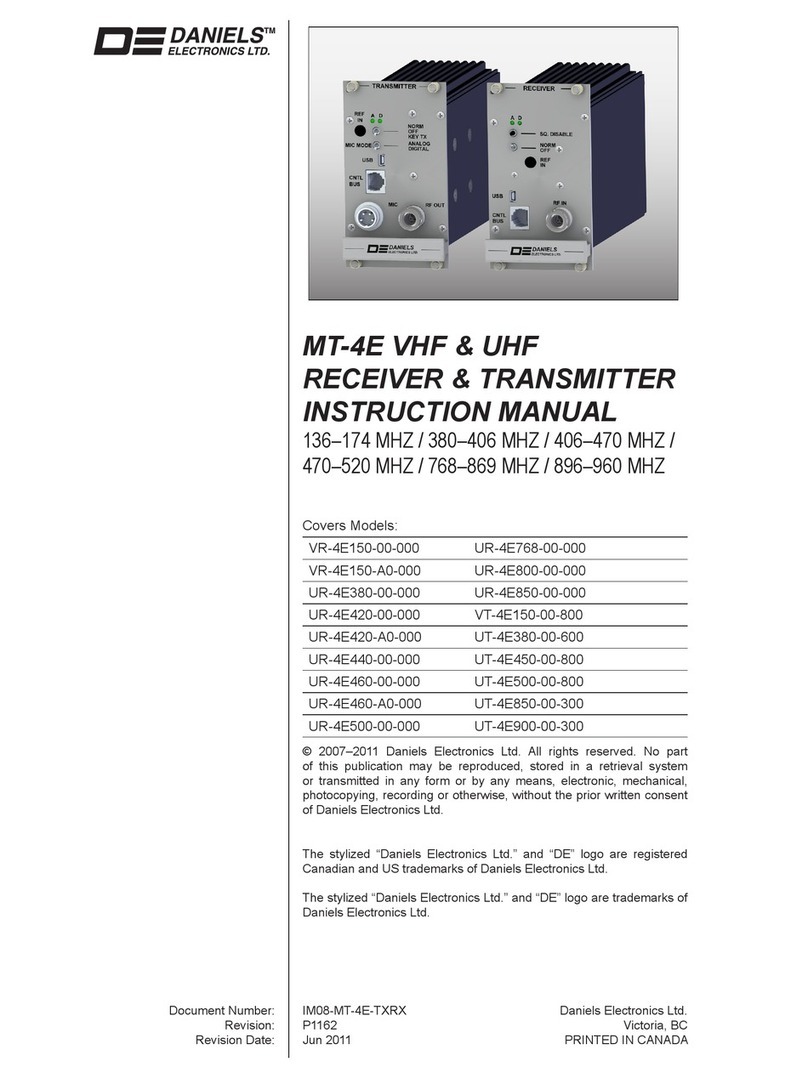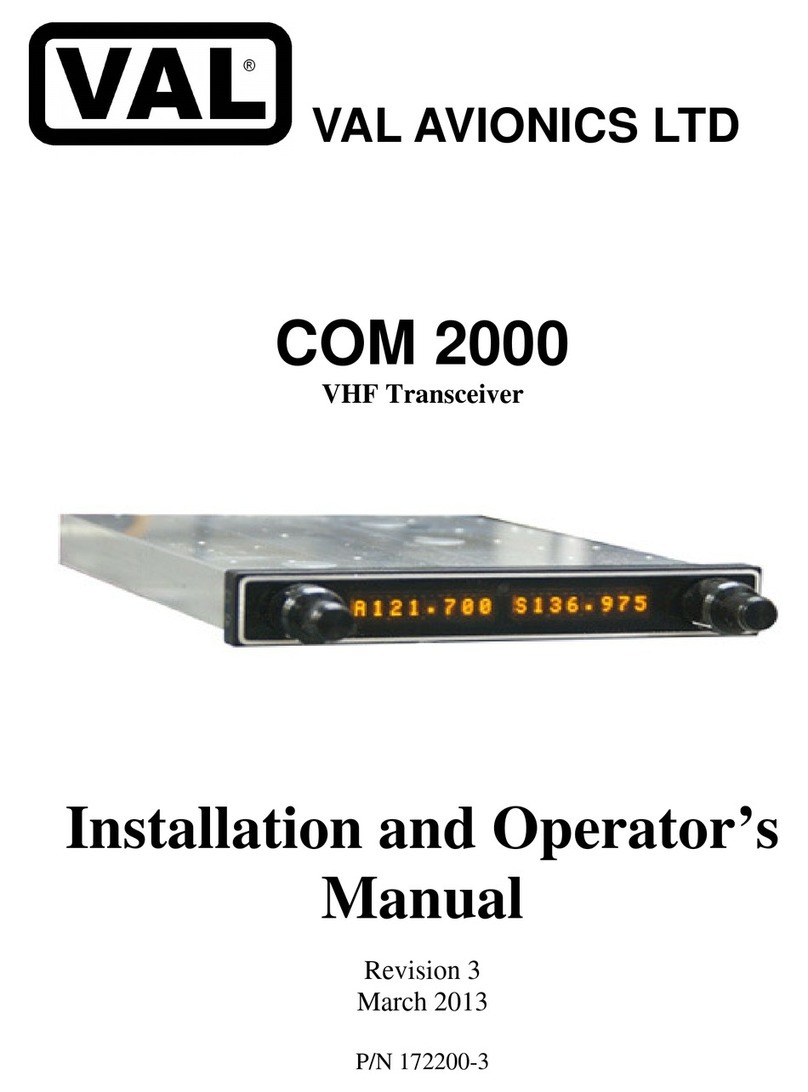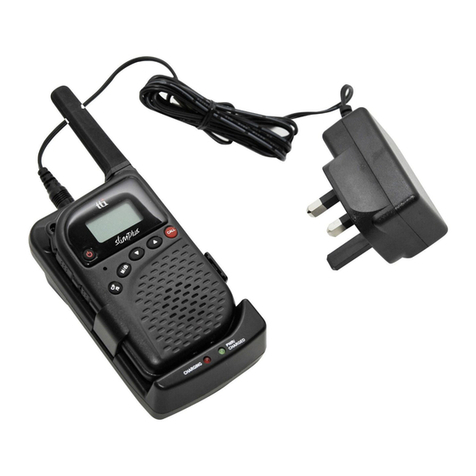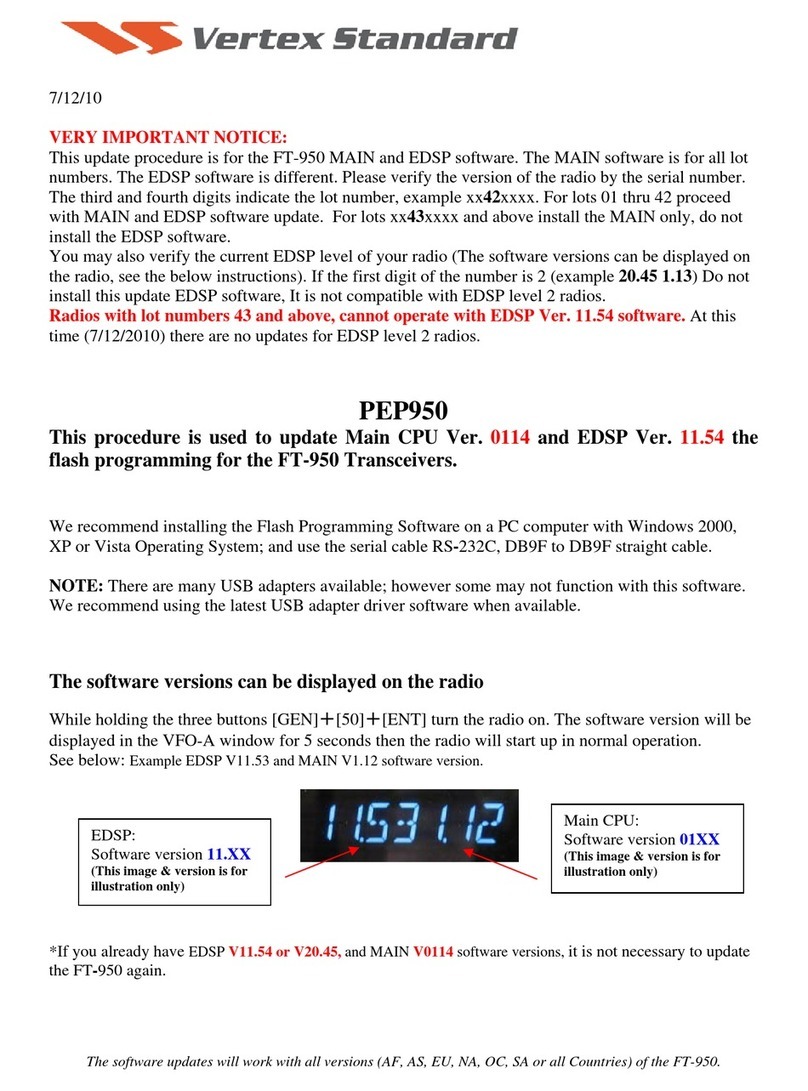Icom IC-M505 User manual

INSTRUCTION MANUAL
iM505
VHF MARINE TRANSCEIVER

ii
FORWORD
Thank you for purchasing this Icom product. The IC-M505
vhf marine transceiver is designed and built with Icom’s
state of the art technology and craftsmanship. With proper
care, this product should provide you with years of trouble-
free operation.
We want to take a couple of moments of your time to thank
you for making the IC-M505 your radio of choice, and hope
you agree with Icom’s philosophy of “technology first.” Many
hours of research and development went into the design of
your IC-M505.
DFEATURES
❍Simple operation with large keys
❍Easy to hear speaker
❍Built-in DSC meets ITU Class D requirement
❍Rugged waterproof construction
❍Optional COMMANDMIC III™ (HM-162E) is
available
❍
Easy to make individual DSC calls using Icom's
MA-500TR Class B AIS Transponder
IMPORTANT
READ ALL INSTRUCTIONS carefully and completely
before using the transceiver.
SAVE THIS INSTRUCTION MANUAL — This in-
struction manual contains important operating instructions
for the IC-M505.
EXPLICIT DEFENITIONS
WORD DEFINITION
RWARNING! Personal injury, fire hazard or electric
shock may occur.
CAUTION Equipment damage may occur.
NOTE
If disregarded, inconvenience only. No risk
of personal injury, fire or electric shock.
CLEAN THE TRANSCEIVER AND MICROPHONE THOR-
OUGHLY WITH FRESH WATER after exposure to water
including salt, otherwise, the keys and switch may become
inoperable due to salt crystallization.

ii
IN CASE OF EMERGENCY
If your vessel requires assistance, contact other vessels and
the Coast Guard by sending a Distress call on Channel 16.
USING CHANNEL 16
DISTRESS CALL PROCEDURE
1. “MAYDAY MAYDAY MAYDAY.”
2. “THIS IS ...............” (name of vessel).
3. Say your call sign or other indication of the vessel (AND
9-digit DSC ID if you have one).
4. “LOCATED AT ...............” (your position).
5. State the nature of the distress and assistance required.
6. Give any other information which might facilitate the
rescue.
Or, transmit your Distress call using digital selective calling
on Channel 70.
USING DIGITAL SELECTIVE CALLING (Ch 70)
DISTRESS CALL PROCEDURE
1. While lifting up the key cover, push and hold [DISTRESS]
for 5 sec. until you hear 5 short beeps change to one
long beep.
2. Wait for an acknowledgment on Channel 70 from a
coast station.
•Aftertheacknowledgementisreceived,Channel16isauto-
matically selected.
3. Push and hold [PTT], then transmit the appropriate in-
formation as listed above.
INSTALLATION NOTE
The installation of this equipment should be made in such a
manner as to respect the EC recommended electromagnetic
field exposure limits (1999/519/EC).
The maximum RF power available from this device is 25
watts. The antenna should be installed as high as possi-
ble for maximum efficiency and that this installation height
should be at least 5 meters above ground (or accessible)
level. In the case where an antenna cannot be installed at
a reasonable height, then the transmitter should neither be
continuously operated for long periods if any person is within
5 meters of the antenna, nor operated at all if any person is
touching the antenna.
In all cases any possible risk depends on the transmitter
being activated for long periods. (actual recommendation
limits are specified as an average of 6 minutes) Normally the
transmitter is not active for long periods of time. Some radio
licenses will require that a timer circuit automatically cuts the
transmitter after 1–2 minutes etc.
Similarly some types of transmitter, SSB, CW, AM, etc. have
a lower ‘average’ output power and the perceived risk is even
lower.

iii
DOC
DECLARATION
OF CONFORMITY
We Icom Inc. Japan
1-1-32, Kamiminami, Hirano-ku
Osaka 547-0003, Japan
Kind of equipment:
VHF MARINE TRANSCEIVER
This compliances is based on conformity with the following harmonised
standards, specifications or documents:
i)
EN 301 025-2 V1.2.1 (2004-09)
ii)
EN 301 025-3 V1.2.1 (2004-09)
iii) EN 60945 2002
iv) EN 60950-1 2001
v) EN 300 698-2 V1.1.1 ( 2000-08)
vi) EN 300 698-3 V1.1.1 ( 2001-05)
Type-designation: iM505
Signature
Declare on our sole responsibility that this equipment complies with the
essential requirements of the Radio and Telecommunications Te rminal
Equipment Directive, 1999/5/EC, and that any applicable Essential Test
Suite measurements have been performed.
Version (where applicable):
0560
Authorized representative name
Place and date of issue
Düsseldorf
28th
Feb.
2006
CE versions of the IC-M505 which display the
“CE” symbol on the serial number label, com-
ply with the essential requirements of the Eu-
ropean Radio and Telecommunication Termi-
nal Directive 1999/5/EC.
This warning symbol indicates that this equipment
operates in non-harmonised frequency bands and/
or may be subject to licensing conditions in the
country of use. Be sure to check that you have the
correct version of this radio or the correct program-
ming of this radio, to comply with national licensing
requirement.

iv
TABLE OF CONTENTS
FORWORD............................................................................................... i
IMPORTANT............................................................................................. i
EXPLICIT DEFENITIONS ........................................................................ i
IN CASE OF EMERGENCY.....................................................................ii
INSTALLATION NOTE..............................................................................ii
DOC.........................................................................................................iii
TABLE OF CONTENTS...........................................................................iv
PRECAUTIONS....................................................................................... v
1 OPERATING RULES......................................................................... 1
2 PANEL DESCRIPTION.................................................................. 2–5
■ Front panel ..................................................................................... 2
■ Function display ............................................................................. 4
■ Microphone..................................................................................... 5
3 BASIC OPERATION.................................................................... 6–11
■ Channel selection........................................................................... 6
■ Receiving and transmitting ............................................................. 8
■ Call channel programming ............................................................. 9
■ Channel comments ...................................................................... 10
■ Microphone Lock function ............................................................ 10
■ Display backlight........................................................................... 10
■ Optional voice scrambler operation.............................................. 11
4 SCAN OPERATION................................................................... 12–13
■ Scan types.................................................................................... 12
■ Setting TAG channels ................................................................... 13
■ Starting a scan ............................................................................. 13
5 DUALWATCH/TRI-WATCH.............................................................. 14
■ Description ................................................................................... 14
■ Operation...................................................................................... 14
6 DSC OPERATION ..................................................................... 15–49
■ MMSI code programming ............................................................. 15
■ MMSI code check......................................................................... 16
■ DSC address ID ........................................................................... 17
■ Position and time programming.................................................... 21
■ Position and time indication.......................................................... 22
■ GPS information indication........................................................... 22
■ Distress call .................................................................................. 23
■ Transmitting DSC calls ................................................................. 26
■ Receiving DSC calls..................................................................... 41
■ Received messages ..................................................................... 45
■ DSC Set mode ............................................................................. 47
7 OTHER FUNCTIONS................................................................. 50–54
■ Intercom operation ....................................................................... 50
■ RX Speaker function .................................................................... 51
■ Hailer operation ............................................................................ 52
■ Automatic foghorn function........................................................... 53
8 SET MODE ................................................................................ 55–57
■ Set mode programming................................................................ 55
■ Set mode items ............................................................................ 55
9 CONNECTIONS AND MAINTENANCE .................................... 58–65
■ Connections ................................................................................. 58
■ Antenna........................................................................................ 59
■ Fuse replacement......................................................................... 59
■ Supplied accessories ................................................................... 59
■ Microphone hanger ...................................................................... 59
■ Mounting the transceiver .............................................................. 60
■ MB-75 installation......................................................................... 61
■ UT-112/UT-98 installation ............................................................. 62
■ HM-162E installation .................................................................... 63
10 TROUBLESHOOTING..................................................................... 66
11 SPECIFICATIONS AND OPTIONS ........................................... 67–68
■ Specifications ............................................................................... 67
■ Options......................................................................................... 68
12 CHANNEL LIST......................................................................... 69–70
13 TEMPLATE ...................................................................................... 71
1
2
3
4
5
6
7
8
9
10
11
12
13
14
15
16

v
RWARNING! NEVER connect the transceiver to an
AC outlet. This may pose a fire hazard or result in an electric
shock.
RWARNING! NEVER connect the transceiver to a
power source of more than 16 V DC or use reverse polarity.
This will ruin the transceiver.
RWARNING! NEVER cut the DC power cable between
the DC plug at the back of the transceiver and fuse holder. If
an incorrect connection is made after cutting, the transceiver
may be damaged.
CAUTION: NEVER place the transceiver where normal
operation of the vessel may be hindered or where it could
cause bodily injury.
KEEP the transceiver and microphone at least 1 m away
from the vessel’s magnetic navigation compass.
DO NOT use or place the transceiver in areas with tem-
peratures below –20°C or above +60°C or, in areas subject
to direct sunlight, such as the dashboard.
DO NOT use chemical agents such as benzine or alcohol
when cleaning, as they may damage the transceiver sur-
faces. If the transceiver becomes dusty or dirty, wipe it clean
with a soft, dry cloth.
BE CAREFUL! The transceiver rear panel will become
hot when operating continuously for long periods.
Place the transceiver in a secure place to avoid inadvertent
use by children.
BE CAREFUL! The transceiver and the optional HM-
162E commandmic iii™meet IPX8 requirements for water-
proof protection. However, once the transceiver has been
dropped, waterproof protection cannot be guaranteed be-
cause of possible damage to the transceiver’s case or the
waterproof seal.
Approved Icom optional equipment is designed for optimal
performance when used with an Icom transceiver.
Icom is not responsible for the destruction or damage to an
Icom transceiver in the event the Icom transceiver is used
with equipment that is not manufactured or approved by Icom.
PRECAUTIONS

1
1
OPERATING RULES
DPRIORITIES
•Readallrulesandregulationspertainingtoprioritiesand
keep an up-to-date copy handy. Safety and Distress calls
take priority over all others.
•YoumustmonitorChannel16whenyouarenotoperating
on another channel.
•Falseorfraudulentdistresssignalsareprohibitedandpun-
ishable by law.
DPRIVACY
•Informationoverheardbutnotintendedforyoucannotlaw-
fully be used in any way.
•Indecentorprofanelanguageisprohibited.
DRADIO LICENSES
(1) SHIP STATION LICENSE
You must have a current radio station license before using
the transceiver. It is unlawful to operate a ship station which
is not licensed.
Inquire through your dealer or the appropriate government
agency for a Ship-Radiotelephone license application. This
government-issued license states the call sign which is your
craft’s identification for radio purposes.
(2) OPERATOR’S LICENSE
A Restricted Radiotelephone Operator Permit is the license
most often held by small vessel radio operators when a radio
is not required for safety purposes.
The Restricted Radiotelephone Operator Permit must be
posted or kept with the operator. Only a licensed radio op-
erator may operate a transceiver.
However, non-licensed individuals may talk over a trans-
ceiver if a licensed operator starts, supervises, ends the call
and makes the necessary log entries.
Keep a copy of the current government rules and regulations
handy.
Icom, Icom Inc. and the Icom logo are registered trademarks of Icom Incor-
porated (Japan) in Japan, the United States, the United Kingdom, Germany,
France, Spain, Russia and/or other countries.
COMMANDMIC III is a trademark of Icom Incorporated (Japan) in the United
States.
1

2
PANEL DESCRIPTION
2
■Front panel
Function display (p. 4)Speaker
q
e
r
t
y
w
uio!0!1
!2
!3
qDISTRESS KEY [DISTRESS]
Push for 5 sec. to transmit a Distress call. (p. 23)
wDSC MENU KEY [MENU]
Push to toggle the DSC menu appear or disappear.
(p. 15)
eCLEAR KEY [CLR]
Push to cancel the entered function, exit Set mode.
(pp. 9, 10, 55)
rHAIL/RXSPEAKERKEY[HAIL•RX ]
➥Push to turn the hailer mode ON or OFF. (p. 52)
➥Push and hold for 1 sec. to turn the RX Speaker mode
ON or OFF. (p. 51)
➥While pushing and holding [H/L], push to turn the auto
foghorn function ON. (p. 54)
tINTERCOM KEY [IC]
➥Push to activate an optional Intercom function. (p. 50)
➥Push and hold to call the optional command micro-
phone while in Intercom mode. (p. 50)
yCHANNEL16/CALLCHANNELKEY[16•C]
➥Push to select Channel 16. (p. 6)
➥Push and hold for 1 sec. to select Call channel. (p. 6)
•“CALL” appears when Call channel is selected.
➥
Push and hold for 3 sec. to enter Call channel program-
ming condition when Call channel is selected. (p. 9)
➥While pushing and holding [H/L], push to enter the
channel comment programming condition. (p. 10)
➥Advance the cursor while in the channel comment pro-
gramming condition. (p. 10)
➥While turning power ON, push to enter Set mode.
(p. 55)

3
2
PANEL DESCRIPTION
uCHANNELSELECTOR[CHANNEL•ENTER]
➥Rotate to select the operating channels, Set mode set-
tings, etc. (pp. 6–8, 55)
➥While pushing and holding [H/L], rotate to adjust the
brightness of the LCD and key backlight. (p. 10)
➥Push to enter the input channel comment, selected
item, etc. (pp. 10, 55)
➥Rotate to check TAG channels, changes scanning di-
rection or resumes the scan manually during scan.
(p. 13)
➥While pushing and holding [HAIL•RX ], rotate to ad-
just the audio level in RX Speaker mode. (p. 51)
➥Push and hold for 1 sec. to display the GPS informa-
tion when a GPS receiver is connected. (p. 22)
iDIAL/DUAL/GROUPKEY[DIAL•DUAL/GRP]
➥Push to select the regular channel. (p. 7)
➥Push and hold for 1 sec. to start Dualwatch or Tri-
watch. (p. 14)
➥Push to stop Dualwatch or Tri-watch when either is ac-
tivated. (p. 14)
➥Move the cursor backward while in the channel com-
ment programming condition. (p. 10)
➥While pushing and holding [H/L], push to select the
desired channel group in sequence. (p. 7)
•EURversionhasInternationalchannelsonlyandthis
function is not available.
oSQUELCH CONTROL [SQL]
Rotate to set the squelch threshold level. (p. 8)
!0SCAN/TAGKEY[SCAN•TAG] (p. 13)
➥Push to start and stop Normal or Priority scan.
➥Push and hold for 1 sec. to set or clear the displayed
channel as a TAG (scanned) channel.
➥While pushing and holding [H/L], push for 3 sec. to
clear or set all TAG channels in the selected channel
group.
!1 VOLUME CONTROL [VOL] (p. 8)
Rotate to adjust the audio level.
!2 TRANSMIT POWER KEY [H/L]
➥Push to toggle the power high or low. (p. 8)
•Somechannelsaresettolowpoweronly.
➥While pushing this key, some keys perform secondary
functions.
!3 POWER KEY [POWER] (p. 8)
➥Push to turn power ON.
➥Push and hold for 1 sec. to turn power OFF.
2

4
2PANEL DESCRIPTION
■Function display
BUSY 25W INT CALL
RX DUP
SCRAM TAG
NORMAL SCAN
-34°34.506N
123°23.236W
Local 1:10 CALLING
qwerty
!4
!3
!1
!0
!2 i
o
u
qRX SPEAKER INDICATOR (p. 51)
Appears during the RX Speaker mode.
wPOWER INDICATOR (p. 8)
➥“25W” appears when high power is selected.
➥“1W” appears when low power is selected.
eTAG CHANNEL INDICATOR (p. 13)
Appears when a TAG channel is selected.
rDUPLEX INDICATOR (p. 7)
Appears when a duplex channel is selected.
tCHANNEL GROUP INDICATOR (p. 7)
Indicates whether an International “INT,” U.S.A. “USA,”
DSC “DSC” or ATIS “ATIS” channel is in use. (Depends
on version)
yCALL CHANNEL INDICATOR (pp. 6, 9)
Appears when the call channel is selected.
uLOW BATTERY INDICATOR
Blinks when the battery voltage drops to approx. 10 V DC
or below.
iCHANNEL NUMBER READOUT
Indicates the selected operating channel number.
oCHANNEL COMMENT INDICATOR
Channel comment appears if programmed. (p. 10)
•“WAIT” blinks while transmitting or operating the hailer funci-
tion, by using an optional command microphone. (p. 52)
!0 TIME ZONE INDICATOR
➥Shows the current time data when a GPS receiver is
connected, or the time data is manually programmed.
•“??” may blink every 2 sec. instead of current time data,
when the GPS current time data is invalid. After 23.5 hours
have passed, “No Time” will appear.
•“??” may blink every 2 sec. instead of current time data,
after 4 hours have passed from the time that was manually
programmed. The manually programmed time data is held
for 23.5 hours only, and after that, “No Time” will appear.
➥“ Local” appears when the offset time data is set.
(p. 47)
➥“ No Time” appears when no GPS receiver is con-
nected and no time data is input manually.

5
2
PANEL DESCRIPTION
2
!1 POSITION INDICATOR
➥Shows the current position data when a GPS re-
ceiver is connected, or the time data is manually pro-
grammed.
•“??” may blink every 2 sec. instead of position data when
the GPS position data is invalid. The last position data is
held for 23.5 hours only, and after that, “No Position”
will appear.
•“??” may blink every 2 sec. instead of position data,
after
4 hours have passed from the time that is manually pro-
grammed. The manually programmed position data is held for
23.5 hours only, and after that, “No Position” will ap-
pear.
➥“ No Position” appears when no GPS receiver is
connected and no position data is input manually.
!2 SCAN INDICATOR
➥
“PRI-SCAN 16” appears during Priority scan;
“NORMAL SCAN” appears during Normal scan. (p. 13)
➥“ DUAL 16” appears during Dualwatch; “TRI 16” ap-
pears during Tri-watch. (p. 14)
!3 SCRAMBLER INDICATOR (p. 11)
Appears when the voice scrambler function is activated.
(only when the optional scrambler unit is installed.)
!4 BUSY/TRANSMIT INDICATOR (p. 8)
➥“ BUSY” appears when receiving a signal or when the
squelch opens.
➥“TX” appears while transmitting.
■Microphone
Microphone
Speaker
w
q
e
qPTT SWITCH [PTT]
Push and hold to transmit; release to receive. (p. 8)
wCHANNEL UP/DOWN KEYS [Y]/[Z]
➥Push either key to change the operating memory chan-
nel, Set mode settings, etc. (pp. 6, 7, 55)
➥Checks TAG channels, changes scanning direction or
resumes the scan manually during scan. (p. 13)
eTRANSMIT POWER KEY [HI/LO]
➥Toggles power high and low when pushed. (p. 8)
•Somechannelsaresettolowpoweronly.
➥While pushing and holding [HI/LO], turn power ON
to toggle the Microphone Lock function ON or OFF.
(p. 10)

6
BASIC OPERATION
3
■Channel selection
DChannel 16
Channel 16 is the distress and safety channel. It is used for
establishing initial contact with a station and for emergency
communications. Channel 16 is monitored during both Du-
alwatch and Tri-watch. While standing by, you must monitor
Channel 16.
➥Push [16•C] momentarily to select Channel 16.
➥Push [DIAL•DUAL/GRP] to return to the condition before
selecting Channel 16, or rotate [CHANNEL] to select an
operating channel.
25W INT
TAG
34°34.506N
123°23.236W
UTC 12:00 CALLING
Push
DCall channel
Each regular channel group has a separate leisure-use call
channel. The call channel is monitored during Tri-watch. The
call channels can be programmed (p. 9) and are used to
store your most often used channel in each channel group
for quick recall.
➥Push [16•C] for 1 sec. to select the call channel of the se-
lected channel group.
•“CALL” and call channel number appear.
•Eachchannelgroupmayhaveanindependentcall
channel after programming a call channel. (p. 9)
➥Push [DIAL•DUAL/GRP] to return to the condition before
selecting call channel, or rotate [CHANNEL] to select an
operating channel.
25W INT CALL
TAG
34°34.506N
123°23.236W
UTC 12:00 CALLING
Push
for 1 sec.

7
3
BASIC OPERATION
3
DInternational channels
There are pre-programmed 57 international channels for the
IC-M505.
qPush [DIAL•DUAL/GRP] to select a regular channel.
wWhile pushing and holding [H/L], push [DIAL•DUAL/
GRP] to change the channel group, if necessary.
•“INT” appears when International channel is selected.
eRotate [CHANNEL] to select a channel.
•“DUP” appears for duplex channels.
25W INT
DUP
TAG
34°34.506N
123°23.236W
UTC 12:00 PORT OPR
Push +
DU.S.A. channels (U.K. version only)
For U.K. version, there are pre-programmed 58 U.S.A. chan-
nels in addition to 57 International channels.
qPush [DIAL•DUAL/GRP] to select a regular channel.
wWhile pushing and holding [H/L], push [DIAL•DUAL/
GRP] to change the channel group, if necessary.
•InternationalandU.S.A.channelscanbeselectedinsequence.
eRotate [CHANNEL] to select a channel.
•“DUP” appears for duplex channels.
25W USA
DUP
TAG
34°34.506N
123°23.236W
UTC 12:00 PORT OPR
Push +
DATIS and DSC channels
(Holland and FRG versions only)
For Holland and FRG version, there are pre-programmed 57
ATIS and 57 DSC* channels in addition to 57 International
channels.
*FRG version only
qPush [DIAL•DUAL/GRP] to select a regular channel.
wWhile pushing and holding [H/L], push [DIAL•DUAL/
GRP] to change the channel group, if necessary.
•International,ATISandDSCchannelscanbeselectedinse-
quence.
eRotate [CHANNEL] to select a channel.
•“DUP” appears for duplex channels.
25W DSC
TAG
34°34.506N
123°23.236W
UTC 12:00 CALLING
1W ATIS
TAG
COMMERCIAL
Push +
ATIS channel DSC channel

8
3BASIC OPERATION
■Receiving and transmitting
CAUTION: Transmitting without an antenna may dam-
age the transceiver.
qPush [POWER] to turn power ON.
wSet the audio and squelch levels.
➥Rotate [SQL] fully counterclockwise in advance.
➥Rotate [VOL] to adjust the audio output level.
➥Rotate [SQL] clockwise until the noise disappears.
eWhile pushing and holding [H/L], push [DIAL•DUAL/
GRP] to change the channel group. (p. 7)
rRotate [CHANNEL] to select the desired channel.
(pp. 6, 7)
•Whenreceivingasignal,“BUSY” appears and audio is emitted
from the speaker.
•Furtheradjustmentof[VOL] may be necessary.
tPush [H/L] to select the output power if necessary.
•“25W” or “1W” appears when high or low power is selected, re-
spectively.
The channels 75 and 76 in the international channel group are
limited to low power (1 W) only. And the output power selection
is inhibited on these channels.
•Chooselowpowerforshortrangecommunications,choose
high power for longer distance communications.
•Somechannelsareforlowpoweronly.
yPush and hold [PTT] to transmit, then speak into the mi-
crophone.
•“TX” appears.
•Channel70cannotbeusedfortransmissionotherthanDSC.
uRelease [PTT] to receive.
IMPORTANT: To maximize the readability of your trans-
mitted signal, pause a few sec. after pushing [PTT], hold
the microphone 5 to 10 cm from your mouth and speak
into the microphone at a normal voice level.
t
Microphone
qy
reww
iu
rey

9
3
BASIC OPERATION
3
■Call channel programming
You can program the call channel with your most often-used
channels in each channel group for quick recall.
qWhile pushing and holding
[H/L], push [DIAL•DUAL•
GRP] one or more times to
select the desired channel
group (INT, USA, ATIS or
DSC) to be programmed.
wPush [16•C] for 1 sec. to
select the call channel of
the selected channel group.
•“CALL” and call channel
number appear.
ePush [16•C] again for 3
sec. (until a long beep
changes to 2 short beeps)
to enter call channel pro-
gramming.
•Channelnumberstartsblink-
ing.
rRotate [CHANNEL] to se-
lect the desired channel.
tPush [16•C] to program the
displayed channel as the
call channel.
•Push[CLR] to cancel.
•Thechannelnumberstops
blinking.
25W INT
DUP
TAG
34°34.506N
123°23.236W
UTC 12:00 INTL
25W INT CALL
TAG
34°34.506N
123°23.236W
UTC 12:00 CALLING
25W INT CALL
TAG
34°34.506N
123°23.236W
UTC 12:00 CALLING
25W INT CALL
DUP
TAG
34°34.506N
123°23.236W
UTC 12:00 INTL
25W INT CALL
DUP
TAG
34°34.506N
123°23.236W
UTC 12:00 INTL

10
3BASIC OPERATION
■Channel comments
The channels can be labelled with a unique alphanumeric ID
of up to 10 characters.
Capital letters, small letters, 0 to 9, some symbols (/ . –) and
space can be used.
qSelect the desired channel.
•CancelDualwatch,Tri-watchorScaninadvance.
wWhile pushing and holding [H/L], push [16•C] to edit the
channel comment.
•Acursorandtherstcharac-
ter start blinking alternately.
eSelect the desired charac-
ter by rotating [CHANNEL].
•Push[16•C] or [DIAL•DUAL/
GRP] to move the cursor for-
ward or backward, respectively.
rRepeat step eto input all characters.
tPush [CHANNEL•ENTER] to input and set the comment.
•Push[CLR] to cancel.
•Thecursorandthecharacterstopblinking.
yRepeat steps qto tto program other channel com-
ments, if desired.
■Microphone Lock function
The Microphone Lock function electrically locks [Y]/[Z]and
[HI/LO] keys on the supplied microphone. This prevents ac-
cidental channel changes and function access.
➥While pushing and holding [HI/LO] on the microphone,
turn power ON to toggle the Lock function ON or OFF.
[HI/LO]
[Y]/[Z]
■Display backlight
The function display and keys can be backlit for better visibil-
ity under low light conditions.
➥While pushing and holding [H/L], rotate [CHANNEL] to
adjust the brightness of the LCD and key backlight. After
adjusting, push [CHANNEL•ENTER].
•Thebacklightisadjustablein7levelsandOFF.
25W INT
TAG
34°34.506N
123°23.236W
UTC 12:00PLEASURE__

11
3
BASIC OPERATION
3
■Optional voice scrambler operation
DActivating the scrambler
The optional voice scrambler provides private communica-
tions. In order to receive or send scrambled transmissions you
must first activate the scrambler function. To activate the func-
tion, an optional scrambler unit is necessary. See pages 57,
62 for setting the scrambler unit. Ask your dealer for details.
The scrambler function automatically turns OFF when
Channel 16 or 70 is selected.
qRotate [CHANNEL] to select an operating channel other
than Channel 16 and 70.
wWhile pushing and holding [H/L], push [IC] to turn the op-
tional scrambler function ON.
•“SCRAM” appears.
eTo turn the scrambler function OFF, repeat step w.
•“SCRAM” disappears.
DProgramming scrambler codes
There are 32 codes (1 to 32) or 128 codes (0 to 127)* avail-
able for programming when an optional scrambler unit is
installed. In order to understand one another, all transceivers
in your group must have the same scramble code. This func-
tion may not be available depending on dealer setting.
*Depends on the installed scrambler unit.
qTurn power OFF.
wWhile pushing [16•C], turn power ON to enter set mode.
eAfter the display appears, release [16•C].
rRotate [CHANNEL] to select the “Scrambler Code,”
push [CHANNEL•ENTER].
tRotate [CHANNEL] to select the desired scrambler code.
yPush [CHANNEL•ENTER] to set and exit the scrambler
code item.
uPush [CLR], or rotate [CHANNEL] to select “Exit,”
push [CHANNEL•ENTER] to exit set mode.
--Set Mode--
Scrambler Code
˘5
4
3
2
1
<ENT OK>
--Set Mode--
Dual/Tri
Beep
Contrast
Foghorn Frequency
Radio Power
Scrambler Type
˘Scrambler Code
--Set Mode--
˘Scan Type
Scan Timer
Dual/Tri
Beep
Contrast
Foghorn Frequency
Radio Power
+
to enter set mode.
Push
to select code,
then push.
Rotate
to select item,
then push.
Rotate
Select
Select
[Example]: Programming scrambler code 5.

12
SCAN OPERATION
4
■Scan types
Scanning is an efficient way to locate signals quickly over a
wide frequency range. The transceiver has Priority scan and
Normal scan.
Set the TAG channels (scanned channel) before scanning.
Clear the TAG channels which inconveniently stop scanning,
such as those for digital communication use. (Refer to right
page for details.)
Choose Priority or Normal scan in Set mode. (p. 55)
PRIORITY SCAN
CH 06
CH 01
CH 16
CH 02
CH 05 CH 04
CH 03
Priority scan searches through all TAG channels in se-
quence while monitoring Channel 16. When a signal is
detected on Channel 16, scan pauses until the signal
disappears; when a signal is detected on a channel other
than Channel 16, scan becomes Dualwatch until the sig-
nal disappears.
NORMAL SCAN
CH 01 CH 02
CH 06
CH 05 CH 04
CH 03
Normal scan, like Priority scan, searches through all TAG
channels in sequence. However, unlike Priority scan,
Channel 16 is not checked unless Channel 16 is set as a
TAG channel.

13
4
SCAN OPERATION
4
■Setting TAG channels
For more efficient scanning, add the desired channels as
TAG channels or clear the TAG for unwanted channels.
Channels that are not tagged will be skipped during scan-
ning. TAG channels can be assigned to each channel group
(INT, USA, ATIS or DSC) independently.
qWhile pushing and holding [H/L], push [DIAL•DUAL/
GRP] to select the desired channel group (INT, USA,
ATIS or DSC.)
wSelect the desired channel to be set as a TAG channel.
ePush [SCAN•TAG] for 1 sec. to set the displayed channel
as a TAG channel.
•“TAG” appears in the display.
rTo cancel the TAG channel setting, repeat step e.
•“TAG” disappears.
✔Clearing (or setting) all tagged channels
While pushing and holding [H/L], push [SCAN•TAG] for 3
sec. (until a long beep changes to 2 short beeps) to clear all
TAG channels setting in the channel group.
•RepeataboveproceduretosetallTAGchannels.
■Starting a scan
Set scan type (Priority or Normal scan) and scan resume
timer in advance, using Set mode. (p. 55)
qWhile pushing and holding [H/L], push [DIAL•DUAL/
GRP] to select the desired channel group (INT, USA,
ATIS or DSC) if desired.
wSet TAG channels as described at left.
eMake sure the squelch is closed to start a scan.
rPush [SCAN•TAG] to start Priority or Normal scan.
•“PRI-SCAN 16” appears at the channel comment indicator
during Priority scan.
•“NORMAL SCAN” appears at the channel comment indicator
during Normal scan.
•Whenasignalisdetected,scanpausesuntilthesignaldisap-
pears or resumes after pausing 5 sec. according to Set mode
setting. (Channel 16 is still monitored during Priority scan.)
•Rotate[CHANNEL] to check the scanning TAG channels, to
change the scanning direction or resume the scan manually.
•Abeeptonesoundsand“16” blinks at the channel comment
indicator when a signal is received on Channel 16 during Prior-
ity scan.
Push
Scan starts. When a signal is received
BUSY 25W INT
TAG
NORMAL SCAN
34°34.506N
123°23.236W
UTC 12:00 SAFETY
25W INT
DUP
TAG
NORMAL SCAN
34°34.506N
123°23.236W
UTC 12:00
25W INT
DUP
TAG
34°34.506N
123°23.236W
UTC 12:00 INTL
[Example]: Starting a normal scan.

14
DUALWATCH/TRI-WATCH
5
■Description
Dualwatch monitors Channel 16 while you are receiving on
another channel; Tri-watch monitors Channel 16 and the
call channel while receiving another channel. Dualwatch/Tri-
watch is convenient for monitoring Channel 16 when you are
operating on another channel.
■Operation
qSelect Dualwatch or Tri-watch in Set mode. (p. 56)
w
Rotate [CHANNEL] to select the desired operating channel.
ePush [DIAL•DUAL/GRP] for 1 sec. to start Dualwatch or
Tri-watch.
•“DUAL 16” appears during Dualwatch; “TRI 16” appears
during Tri-watch.
•AbeeptonesoundswhenasignalisreceivedonChannel16.
rTo cancel Dualwatch/Tri-watch, push [DIAL•DUAL/GRP]
again.
DUALWATCH/TRI-WATCH SIMULATION
When Ch 23 is programmed as the call channel.
•IfasignalisreceivedonChannel16,Dualwatch/Tri-
watch pauses on Channel 16 until the signal disappears.
•
If a signal is received on the call channel during Tri-watch,
Tri-watch becomes Dualwatch until the signal disappears.
•TotransmitontheselectedchannelduringDualwatch/
Tri-watch, push and hold [PTT].
[Example]: Operating Tri-watch on INT Channel 25
25W INT
DUP
TAG
TRI 16
34°34.506N
123°23.236W
UTC 12:00 TELEPHONE
BUSY 25W INT CALL
DUP
TAG
TRI 16
34°34.506N
123°23.236W
UTC 12:00 INTL
Tri-watch starts. Signal is received on call
channel.
BUSY 25W INT
DUP
TAG
TRI 16
34°34.506N
123°23.236W
UTC 12:00 TELEPHONE
Signal received on Channel
16 takes priority.
25W INT
DUP
TAG
TRI 16
34°34.506N
123°23.236W
UTC 12:00 TELEPHONE
Tri-watch resumes after the
signal disappears.
Dualwatch Tri-watch
Call channel
Dualwatch Tri-watch
Call channel
Ch 88
Ch 16 Ch 88 Ch 16 Ch 88 Ch 23
Other manuals for IC-M505
2
Table of contents
Other Icom Transceiver manuals
Popular Transceiver manuals by other brands
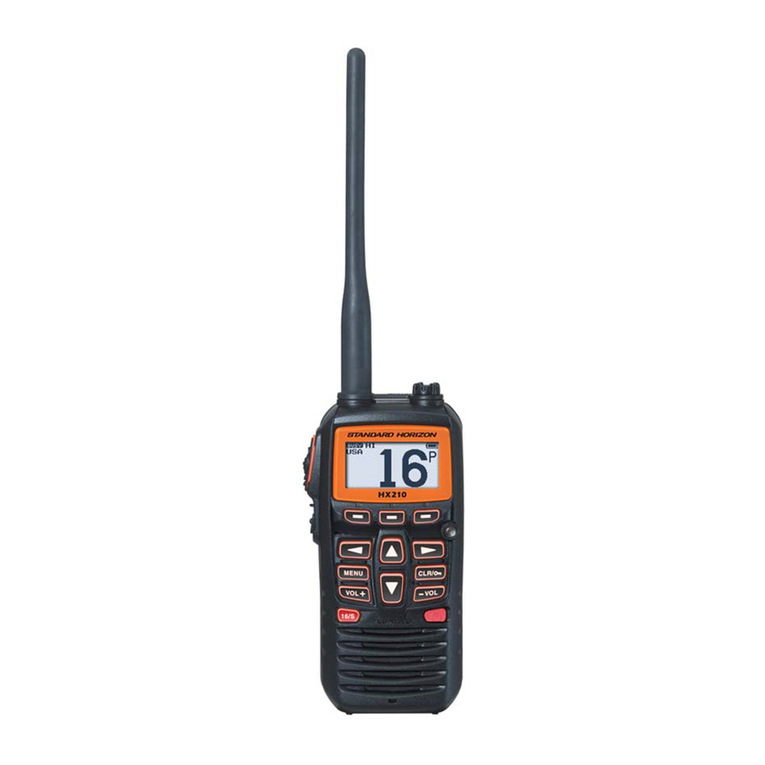
Standard Horizon
Standard Horizon HX210 owner's manual
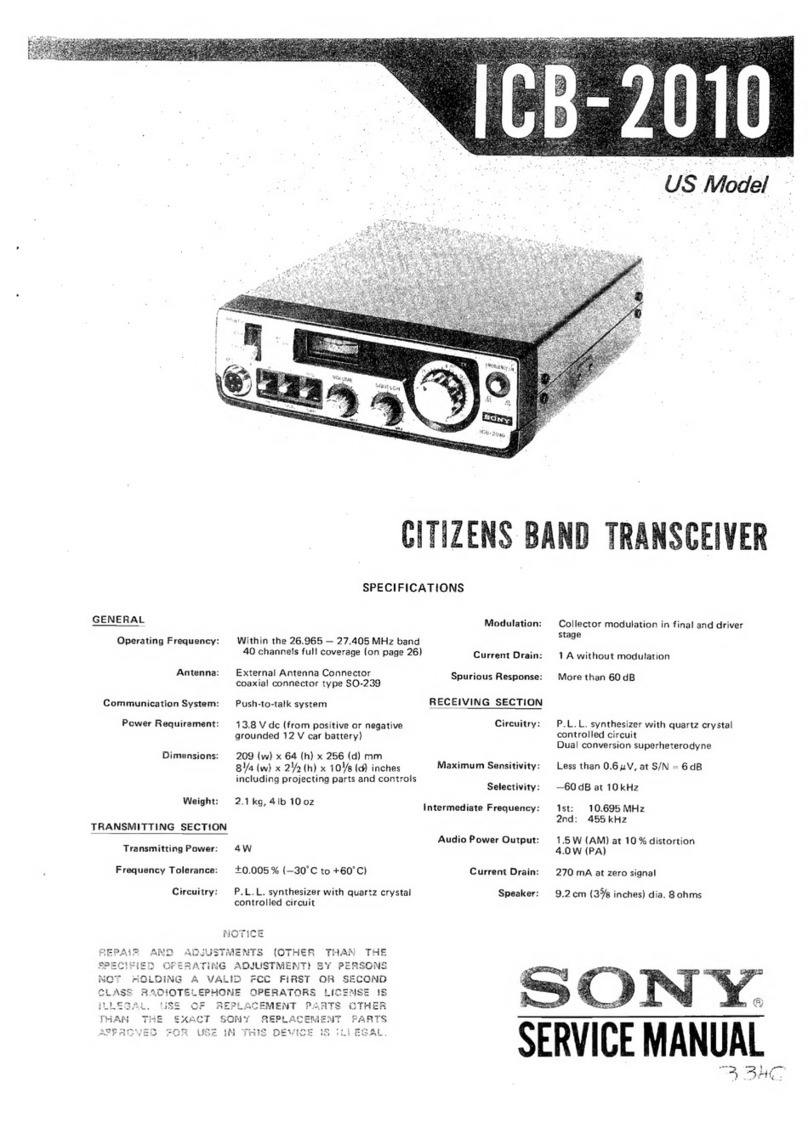
Sony
Sony ICB-2010 Service manual
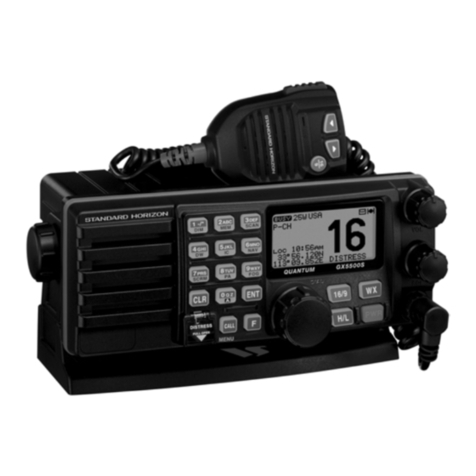
Standard Horizon
Standard Horizon QUANTUM GX5500S owner's manual
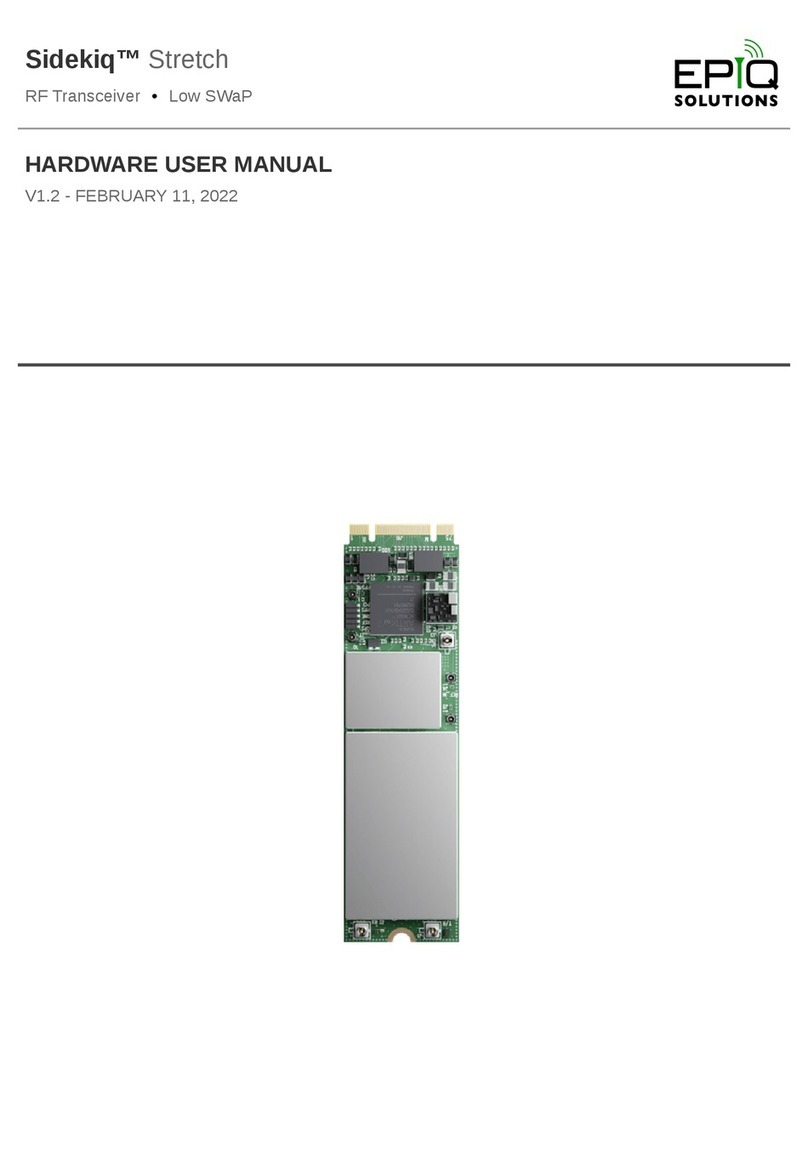
Epiq Solutions
Epiq Solutions Sidekiq Stretch Hardware user manual
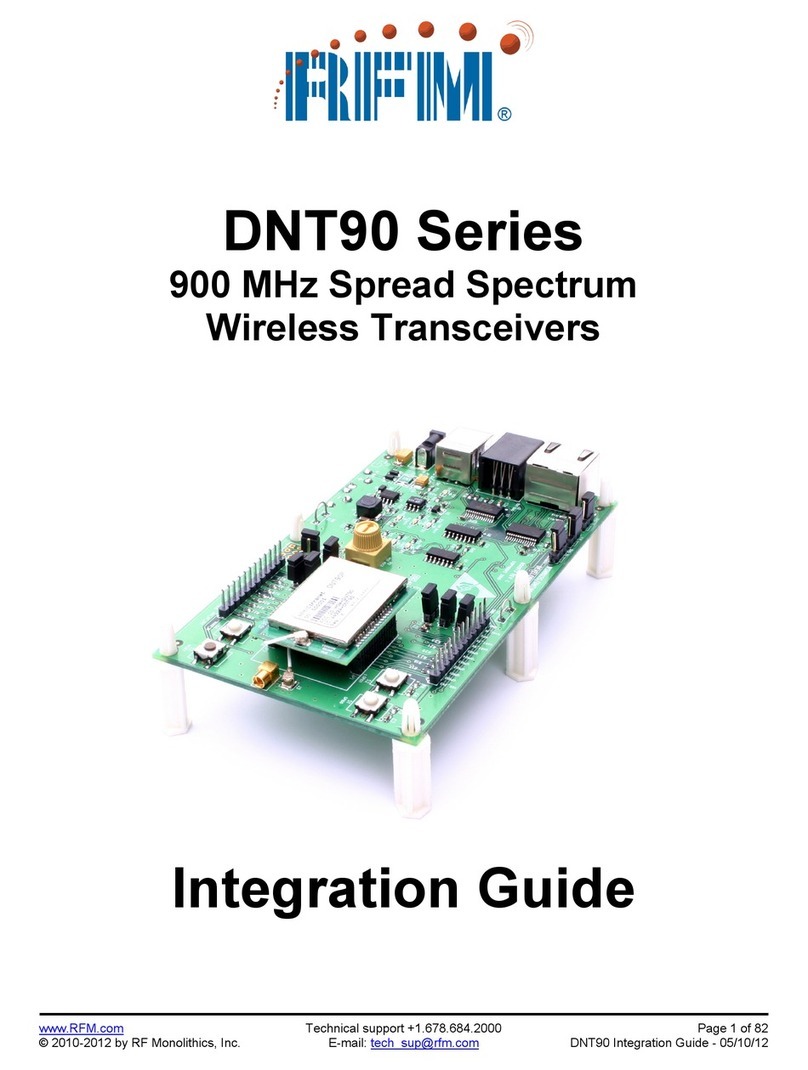
RFM
RFM DNT90 Series Integration guide
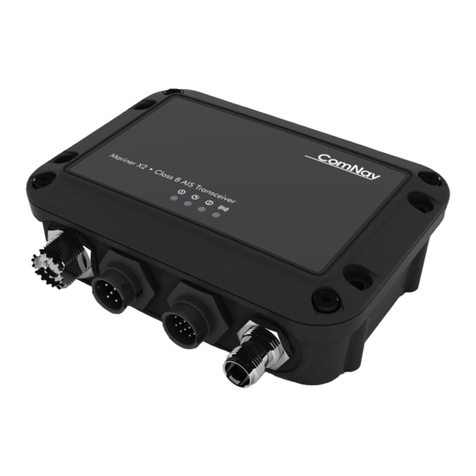
ComNav
ComNav Class B AIS Installation & operation manual
